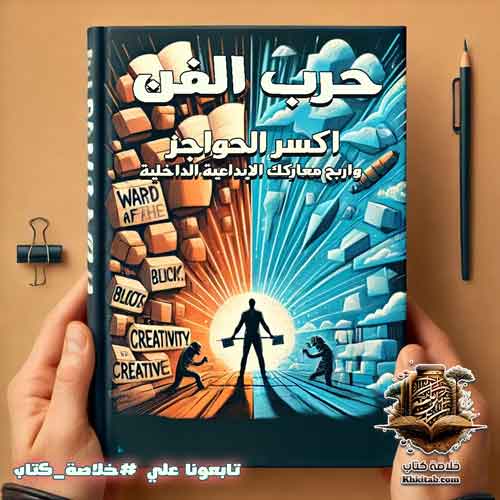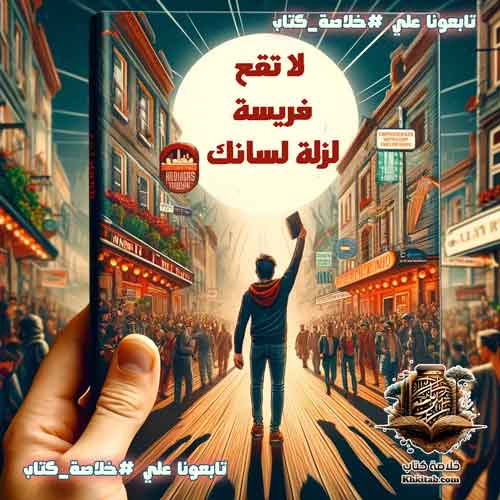Rich Dad Poor Dad Book Summary

In the realm of financial literature, “Rich Dad Poor Dad” stands as a seminal work, guiding readers into the depths of financial and investment philosophies. Authored by Robert Kiyosaki, the book offers an innovative and unconventional perspective on wealth-building and financial independence.
This work isn’t just a primer on financial basics and investment; it delves into Kiyosaki’s very life experience, contrasting the advice and guidance of two pivotal figures: his biological father, referred to as “Poor Dad,” and the father of his childhood friend, dubbed “Rich Dad.”
While Poor Dad was academically educated and held a stable job, he consistently faced financial challenges. In contrast, Rich Dad, lacking extensive formal education, was able to build a financial empire due to his profound understanding of money and business matters.
“Rich Dad Poor Dad” is not merely a reflection on personal experiences; it’s a call to reevaluate our concepts of money, education, and success. Through this inspiring narrative, Kiyosaki encourages readers to think outside the box and adopt a new approach to investment and wealth-building.
إقرأ أيضا:What is Genocide? Unraveling the Shadows of Humanity’s Dark MomentsHow Does “Rich Dad Poor Dad” Highlight the Clash of Traditional vs. Entrepreneurial Mindsets?
In “Rich Dad Poor Dad,” one of the most enlightening financial literacy books by Robert Kiyosaki, a profound exploration into the contrasting mindsets of two fatherly figures unfolds. The essence of the book revolves around the divergent paths to financial stability and success, as seen through the lens of these two influential characters in Kiyosaki’s life.
Poor Dad, representing the traditional mindset, firmly believed in the established route to success: acquiring a quality education, securing a well-paying job, and then climbing the corporate ladder. He viewed job security and consistent wages as the ultimate safeguard against financial hardships. This mindset, deeply ingrained in many, underscores the belief that traditional education and a steady job are the cornerstones of financial stability.
On the opposite end of the spectrum is Rich Dad. He embodies the entrepreneurial spirit, valuing financial intelligence over formal education. Instead of relying on a fixed income from an employer, Rich Dad believed in creating and leveraging assets, taking calculated risks, and understanding the intricacies of the financial world. This entrepreneurial mindset challenges the conventional approach, emphasizing that real wealth comes from smart investments and creating sources of passive income.
The distinction between the two mindsets serves as a foundational theme in the book. Kiyosaki, through the wisdom of Rich Dad, posits that to truly achieve financial independence, one must break free from traditional beliefs and embrace the entrepreneurial way of thinking. This entails seeking opportunities, continuous learning outside formal settings, and having the courage to venture into the realms of business and investment.
In summary, “Rich Dad Poor Dad” doesn’t just provide financial advice; it underscores a paradigm shift from clinging to the familiar confines of job security to bravely navigating the vast seas of entrepreneurial ventures and investments. The book beckons readers to question established norms and consider alternative routes to financial prosperity.
Why is Distinguishing Between Assets and Liabilities Crucial in “Rich Dad Poor Dad”?
In Robert Kiyosaki’s groundbreaking financial literature, “Rich Dad Poor Dad,” a pivotal theme is the clear demarcation between assets and liabilities. This differentiation is not just a matter of financial jargon but the cornerstone of how one approaches wealth creation and preservation.
Assets, as Kiyosaki details, are essentially elements that contribute positively to one’s financial growth. These could range from real estate investments that yield rental income, stocks that provide dividends, or businesses that aren’t heavily reliant on one’s active involvement but still generate profit. The commonality among these is that they consistently “put money in your pocket.”
Liabilities, contrastingly, are the financial obligations or debts that deplete one’s resources. While many people might perceive their home as an asset, Kiyosaki argues that if it’s not generating income and instead incurs costs like mortgage payments, maintenance, and taxes, then it’s a liability. The key takeaway is that owning things that cost you money or decrease in value over time can hamper financial progress.
Kiyosaki’s emphasis on this clear distinction is rooted in his broader philosophy that to attain financial freedom, one needs a portfolio rich in assets and minimal in liabilities. By ingraining this perspective, one can make informed decisions on where to invest, what expenditures to avoid, and how to strategically grow wealth.
In essence, “Rich Dad Poor Dad” goes beyond mere financial advice. It prompts readers to adopt a mindset shift, urging them to prioritize assets – those income-generating powerhouses – over liabilities that continually drain financial resources. This shift in understanding and strategy can be the difference between a life of financial struggle and one of prosperity.
Our Page on Facebook – Book Summary
Why Does “Rich Dad Poor Dad” Emphasize Financial Education Over Formal Education?
“Rich Dad Poor Dad,” penned by Robert Kiyosaki, stands out in the financial literacy domain, primarily for its emphasis on the paramount importance of financial education. As the book delves into the intricacies of wealth-building and financial independence, a consistent theme becomes clear: true wealth doesn’t solely stem from traditional academic pursuits but from profound financial acumen.
In the narrative, Kiyosaki contrasts the perspectives of two father figures. While both held education in high regard, their viewpoints diverged significantly on what constituted essential learning. The “Poor Dad,” a staunch advocate for formal education, believed in the conventional path: earning degrees and securing a stable job. However, as Kiyosaki recounts, this path often led to financial stagnation, as it lacked the practical insights into money management, investing, and wealth multiplication.
On the other hand, the “Rich Dad” underscored that real empowerment comes from financial literacy. He often emphasized that understanding money – how it works, how it can be invested, and how it can generate more money – is the real education one needs. To him, traditional academic accolades without the complement of financial intelligence often lead to being trapped in the rat race, constantly chasing after financial security without ever truly achieving it.
This perspective presented in “Rich Dad Poor Dad” is an eye-opener. It sheds light on the gaps in our traditional education system, which often misses imparting critical financial skills. Kiyosaki’s message is unambiguous: while formal education can provide knowledge and open doors, financial education equips individuals with the tools to navigate the world of money, create sustainable wealth, and achieve true financial freedom.
In essence, Kiyosaki’s work challenges conventional wisdom and encourages readers to prioritize financial literacy. By doing so, they unlock the secrets to leveraging money as a tool, rather than being perpetually enslaved to it.
Book Summary – Your guide to getting book summaries for free (khkitab.com)
How Does “Rich Dad Poor Dad” Advocate for Making Money Work for You Instead of Working for Money?
In the financial realm, the mantra of working hard to earn money is deeply ingrained in many mindsets. However, “Rich Dad Poor Dad” by Robert Kiyosaki introduces a transformative perspective: rather than working tirelessly for money, why not make money work for you? This paradigm shift is at the heart of the book, challenging conventional financial wisdom and suggesting a proactive approach to wealth-building.
Kiyosaki, through the juxtaposed teachings of his two father figures, paints a vivid picture of the differences between passive and active income. Most people, represented by the teachings of Poor Dad, operate under the notion of earning a paycheck. This entails trading hours for dollars, often leading to a cycle where increased expenses demand more working hours, aptly termed the ‘rat race’. In this scenario, one is perpetually chasing financial security without truly attaining it.
In contrast, Rich Dad’s philosophy revolves around the concept of making your money work for you. This involves smart investments in assets – be it real estate, stocks, or businesses – that generate a consistent income without requiring constant active intervention. Such investments, when made judiciously, lead to passive income, where money flows in even when you’re not actively working for it.
By understanding and harnessing the power of investments and compounding, Kiyosaki argues that individuals can break free from the paycheck-to-paycheck cycle. Instead of relying on a linear relationship between hours worked and money earned, the emphasis shifts to creating and nurturing income streams that require initial effort but ultimately lead to sustained financial growth.
In essence, “Rich Dad Poor Dad” doesn’t just provide a financial roadmap; it advocates for a change in mindset. Instead of being in the perpetual pursuit of the next paycheck, Kiyosaki encourages readers to think in terms of investment, growth, and sustainability, ensuring that their money serves them, rather than the other way around.
Why Do Many Fall into the “Rat Race” Trap as Explained in “Rich Dad Poor Dad”?
“Rich Dad Poor Dad” by Robert Kiyosaki is a seminal work that sheds light on financial habits and mindsets. One of the most riveting concepts the book introduces is the “Rat Race” – a metaphorical treadmill on which countless individuals find themselves, working tirelessly but never truly advancing towards genuine financial freedom.
In Kiyosaki’s narrative, the Rat Race exemplifies the cycle where individuals work hard, earn, and then spend almost everything they make on bills and liabilities, leaving little to nothing for savings or investments. It’s an exhausting cycle of earning and spending without ever creating a solid foundation for wealth or even getting a step closer to financial independence.
Several factors contribute to this trapping cycle:
- Lack of Financial Education: Most traditional education systems don’t equip students with the financial literacy required to navigate the complexities of the financial world. Without this knowledge, many make poor financial decisions that keep them ensnared in the Rat Race.
- Instant Gratification: The modern consumerist culture often promotes the idea of “living in the moment,” leading individuals to prioritize short-term pleasures over long-term financial stability. This results in high levels of debt and little room for savings or investments.
- Fear and Conformity: Many are driven by the societal pressures to conform to certain standards, like owning a home or a fancy car, even if it means living beyond their means. This drive can lead to accruing liabilities, further deepening the entrenchment in the Rat Race.
- Not Prioritizing Assets: Kiyosaki consistently emphasizes the importance of accumulating assets – investments that bring in passive income. Many, however, prioritize liabilities (like a new car or a bigger house) over assets, thereby missing out on potential income sources.
Kiyosaki’s “Rich Dad Poor Dad” doesn’t just highlight the problem but offers a way out. By shifting one’s mindset, prioritizing financial education, and focusing on building assets over liabilities, it is possible to break free from the Rat Race and stride confidently towards financial freedom. The book serves as both a cautionary tale and a guide, urging readers to reconsider their financial decisions and habits to avoid the perpetual cycle of the Rat Race.
Why Does “Rich Dad Poor Dad” Stress Working to Learn Instead of Just Earning?
Robert Kiyosaki’s “Rich Dad Poor Dad” is not merely a guide to financial independence; it’s a philosophy on how one should approach work and life. One of its most profound lessons is the concept of “work to learn, not just to earn.” In a world where monetary success often takes precedence, this notion challenges individuals to rethink their motivations behind their career choices.
The narrative contrasts two mindsets. While many focus on jobs with the highest paycheck, Kiyosaki suggests that in the long run, the invaluable experience and skills one gains from different roles can often outweigh immediate financial rewards. Here’s why:
- Building a Skillset: Working in diverse roles and environments provides a range of experiences, from managing people to understanding specific industry dynamics. Such knowledge becomes an asset, paving the way for future opportunities, be it in entrepreneurship or higher managerial roles.
- Understanding Money: A high-paying job might offer immediate comfort, but understanding how money works, how to invest, and how to generate passive income are skills often learned outside of traditional employment contexts. By prioritizing learning, one becomes more adept at navigating the financial world.
- Networking: Certain roles, even if they don’t offer the highest salaries, provide opportunities to meet and interact with industry leaders and like-minded individuals. Building a strong professional network can open doors that money alone can’t.
- Developing an Entrepreneurial Mindset: Engaging in roles that teach, rather than just pay, often cultivates an entrepreneurial spirit. Understanding various facets of a business, even if it’s not your own, can be instrumental if or when you decide to start a venture.
- Long-term Vision: Focusing on learning encourages a long-term approach. While an immediate paycheck is essential, acquiring skills and knowledge sets the stage for greater financial growth in the future.
Kiyosaki’s message in “Rich Dad Poor Dad” is clear: your job isn’t just a means to an end. It’s a platform for growth, learning, and eventual financial freedom. By prioritizing learning over immediate earning, one can build a foundation not just for financial success, but for a fulfilling and knowledgeable career and life.
How Does “Rich Dad Poor Dad” Advocate Overcoming Investment Fears?
In “Rich Dad Poor Dad,” Robert Kiyosaki delves deep into the psychological barriers that hinder many from achieving financial success. Among these barriers, fear stands out prominently — the fear of losing money, the dread of making wrong investment choices, or simply the apprehension of venturing into the unknown realms of finance. Kiyosaki’s insights on combating these fears are both enlightening and actionable.
- Understanding the Difference Between Risks and Calculated Risks: Fear often stems from the unknown. Kiyosaki stresses that not all risks are the same. By educating oneself and gathering relevant information, one can make calculated risks. It’s not about jumping into every investment opportunity but choosing wisely based on informed decisions.
- Learning from Mistakes: Many people fear investing because they dread making mistakes. Kiyosaki asserts that mistakes are an integral part of the learning process. Instead of perceiving them as failures, they should be viewed as lessons that pave the way for better decision-making in the future.
- Start Small: One doesn’t need to make significant financial leaps right from the beginning. Starting with smaller investments allows one to understand the ropes, make informed decisions, and gradually build confidence.
- Embrace Financial Education: Fear is often rooted in ignorance. Kiyosaki is a strong advocate for continuous financial learning. The more one knows about investments, market trends, and financial instruments, the better equipped they are to make decisions without undue fear.
- Seeking Mentors: Having a mentor or someone experienced in the financial world can significantly reduce fear. They can offer guidance, share their own experiences, and provide a perspective that helps in making sound investment choices.
In essence, “Rich Dad Poor Dad” teaches that fear, while natural, shouldn’t be an immobilizing factor. It’s essential to recognize these fears, address them, and transform them into positive actions. Investing, like any other skill, requires practice, patience, and continuous learning. By embracing this journey and the knowledge that comes with it, one can navigate the financial landscape with confidence and purpose.
How Does “Rich Dad Poor Dad” Promote Entrepreneurial Thinking Over Traditional Employment?
“Rich Dad Poor Dad” by Robert Kiyosaki is more than just a financial guide; it’s a manifesto for entrepreneurial thinking. The book challenges many conventional norms about work, money, and life. One of the most vital takeaways from the book is its emphasis on entrepreneurial skills over traditional employment. Here’s why Kiyosaki stresses the importance of entrepreneurship:
- Escape the Rat Race: Kiyosaki introduces the concept of the “rat race,” where most people are stuck in a never-ending cycle of earning and spending without achieving true financial freedom. Entrepreneurship offers a way out – an opportunity to build assets that generate income rather than relying solely on a paycheck.
- Creating Value: Entrepreneurs are problem-solvers. Instead of just performing tasks, they identify needs in the market and create solutions. This value creation not only has financial benefits but also fosters innovation and progression in society.
- Leveraging Time and Money: Traditional jobs typically operate on the principle of trading time for money. Entrepreneurship, on the other hand, is about leveraging both time and money to create systems that can earn autonomously.
- Building Assets: One of Kiyosaki’s key lessons is the importance of building and acquiring assets, which are things that put money into your pocket. Entrepreneurial ventures, when successful, can become significant assets in themselves.
- Continuous Learning and Adaptability: Entrepreneurship is a journey of constant learning. Markets change, consumer needs evolve, and new challenges arise. This continuous adaptation and learning are what makes entrepreneurs resilient and forward-thinking.
- Legacy and Impact: Beyond personal wealth, entrepreneurship provides individuals the opportunity to leave a legacy. By building businesses, they can create jobs, contribute to the economy, and even drive societal change.
- Financial Independence and Control: Being an entrepreneur means taking control of your financial destiny. Instead of being dependent on an employer, entrepreneurs have the power and autonomy to make decisions that shape their financial future.
In “Rich Dad Poor Dad,” Kiyosaki urges readers to think beyond the confines of a 9-to-5 job. By cultivating an entrepreneurial mindset, individuals can unlock opportunities, create value, and ultimately achieve a level of financial freedom and impact that traditional employment often cannot offer.
Why Does “Rich Dad Poor Dad” Advocate Real Estate as a Prime Investment Strategy?
Robert Kiyosaki’s seminal work, “Rich Dad Poor Dad,” serves as a beacon for many looking to navigate the complex world of finance and investments. One of the cornerstones of Kiyosaki’s philosophy is the immense value he places on real estate as an investment avenue. But why does he emphasize real estate so fervently? Here’s an exploration:
- Asset Building: Kiyosaki consistently reiterates the importance of accumulating assets – things that put money in your pocket. Real estate properties, when chosen wisely, can appreciate over time, making them valuable long-term assets that can contribute to wealth generation.
- Passive Income Stream: Rental properties offer a steady source of passive income. Unlike active income (like a regular job where you trade time for money), passive income from real estate works for you even when you’re not actively managing it.
- Tax Benefits: In many jurisdictions, real estate investments come with tax advantages. From deductions for property management expenses to depreciation benefits, the tax code often favors real estate investors.
- Leverage: Real estate allows for the use of leverage more than many other investment avenues. This means you can buy a property with a small percentage of your own money (down payment) and borrow the rest (mortgage). As the property appreciates, the return on your initial investment can be magnified.
- Control over Investment: Unlike stocks where market volatility can be unpredictable, real estate provides a degree of control. Investors can improve properties, adjust rent, or refinance loans to impact their investment’s performance.
- Hedge Against Inflation: Historically, real estate prices tend to rise with inflation. This means that as the cost of living increases, so does the value of your real estate investment, ensuring that your wealth is preserved.
- Tangible Asset: Real estate is a physical, tangible asset. There’s a certain reassurance in owning something you can see and touch, as opposed to intangible assets like stocks or bonds.
In “Rich Dad Poor Dad,” Kiyosaki’s teachings pivot around the idea of making money work for you, instead of the other way around. Real estate, with its myriad benefits, stands out as a concrete example of this philosophy. By understanding the market, making informed decisions, and leveraging the unique advantages of real estate, investors can set themselves on a path to financial freedom and long-term wealth.
How Do the Rich Utilize Tax Laws to Their Advantage as Described in “Rich Dad Poor Dad”?
In “Rich Dad Poor Dad”, Robert Kiyosaki sheds light on a myriad of financial principles that differentiate the rich from the poor and middle class. One of these pivotal principles is the profound understanding and adept utilization of tax laws. But how exactly do the wealthy use these laws to their advantage?
- Asset Classification: Kiyosaki frequently speaks about the importance of distinguishing between assets and liabilities. An asset, by his definition, is something that puts money into your pocket. When it comes to tax benefits, the wealthy often invest in assets that come with depreciation benefits or tax deferments.
- Income Type Recognition: Not all income is taxed equally. For instance, capital gains from investments or real estate might be taxed at a lower rate than regular employment income in some jurisdictions. The rich often structure their earnings to benefit from these lower-taxed income categories.
- Legal Entities: The use of corporations, trusts, and other legal entities can provide tax shielding benefits. Kiyosaki emphasizes that while the poor and middle class often earn and then pay taxes, the rich earn, invest within legal structures, and then get taxed on what’s left, often reducing their overall tax liability.
- Continuous Education: Tax laws are neither static nor simple. They evolve, and their intricacies can be vast. The wealthy prioritize understanding these laws, often hiring the best advisors or indulging in continuous self-education to stay updated.
- Leverage and Interest: In “Rich Dad Poor Dad”, Kiyosaki explains how the wealthy leverage borrowed money for investments, especially in real estate. The interest paid on these loans can sometimes be deducted from taxable income, reducing tax liability.
- Tax Deferral: Certain investment vehicles, like specific retirement accounts or education savings plans, allow individuals to defer paying taxes until a later date. The rich strategically use these instruments to delay and possibly reduce their tax burdens.
- Charitable Contributions: Wealthy individuals often make significant charitable donations, not just out of philanthropy but also as a strategic move. In many tax systems, charitable contributions can be deducted from taxable income, hence reducing tax owed.
Understanding and leveraging tax laws isn’t about evasion but about making informed and strategic decisions. In “Rich Dad Poor Dad”, Kiyosaki emphasizes that knowledge is power, especially when it comes to finances. By comprehending how tax systems work and how they can be optimized legally, individuals can save substantial amounts, leading to increased wealth accumulation and preservation.








